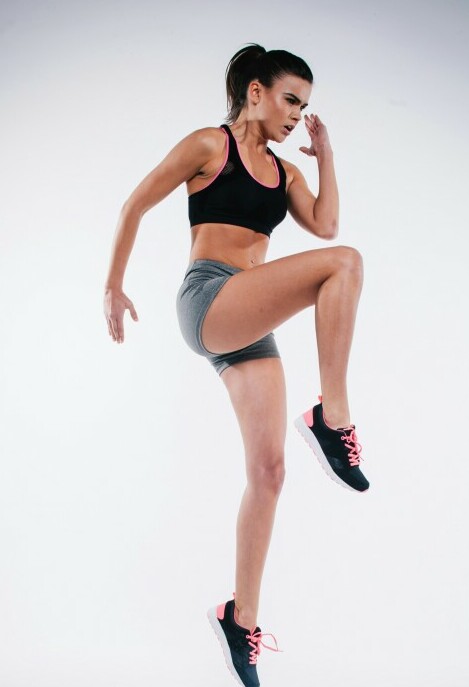Plyometric training is a cornerstone of modern soccer conditioning, essential for enhancing explosive power, agility, and speed among players.
When integrated strategically into a comprehensive training program, plyometrics not only improve physical attributes but also enhance on-field performance significantly.
This guide outlines how to effectively incorporate plyometric training into a soccer player’s overall fitness regimen, providing insights into its definition, benefits, sample training schedules, integration tips, coaching considerations, and more.
Understanding Plyometric Training
Plyometric exercises involve explosive movements that leverage the stretch-shortening cycle of muscles.
This mechanism enhances the muscles’ ability to generate force rapidly, crucial for soccer-specific actions such as sprinting, jumping, and rapid changes in direction.
Benefits of Plyometric Training:
- Enhanced Muscular Power: Improves the ability to produce maximal force in minimal time, beneficial for explosive movements like sprint starts and jumps.
- Increased Reactive Strength: Enhances the muscles’ ability to react quickly to changes in movement demands, essential for on-field agility.
- Improved Neuromuscular Coordination: Optimizes the communication between the nervous system and muscles, enhancing overall movement efficiency and control.
Sample Training Schedules
Weekly Overview
Day 1: Strength and Conditioning
- Warm-up: Begin with dynamic stretches and light jogging to increase core body temperature and prepare muscles for exercise.
- Strength Training: Focus on lower-body exercises such as squats, lunges, and deadlifts to build foundational strength.
- Plyometrics: Incorporate depth jumps and box jumps in 3 sets of 10 reps each to develop explosive power.
- Cool-down: Conclude with static stretches and foam rolling to aid in muscle recovery.
Day 2: Technical Drills and Agility
- Warm-up: Include agility ladder drills, high knees, and butt kicks to improve footwork and coordination.
- Technical Drills: Practice passing, dribbling, and shooting drills to enhance ball control and accuracy.
- Plyometrics: Perform lateral bounds and skater jumps in 3 sets of 12 reps each to enhance lateral movement and agility.
- Cool-down: Focus on stretching and flexibility exercises to maintain muscle elasticity.
Day 3: Rest or Active Recovery
- Engage in light activities such as jogging, swimming, or yoga to promote active recovery and maintain mobility.
Day 4: Speed and Agility
- Warm-up: Begin with jogging and dynamic stretching to prepare muscles for speed work.
- Speed Training: Execute interval sprints and shuttle runs to improve acceleration and sprinting ability.
- Plyometrics: Integrate single-leg hops and lateral hurdle jumps in 3 sets of 15 reps each to enhance power and agility.
- Cool-down: Conclude with stretching and foam rolling to reduce muscle tightness and prevent injury.
Day 5: Endurance and Game Simulation
- Warm-up: Incorporate dynamic movements to simulate game conditions and increase heart rate.
- Endurance Training: Focus on continuous running and small-sided games to build stamina and match fitness.
- Plyometrics: Implement continuous jumps and agility ladder drills within game simulations to mimic real-game scenarios.
- Cool-down: Finish with gentle jogging, stretching, and recovery strategies to promote muscle recovery and reduce fatigue.
Tips for Effective Integration
Progressive Overload
Gradually increase the intensity and complexity of plyometric exercises over time to challenge muscles and stimulate adaptation. This approach prevents plateauing and ensures continuous improvement in athletic performance.
Periodization
Incorporate phases of higher and lower intensity plyometrics throughout the season to peak performance during competitive periods. Adjust training volume and intensity to align with the team’s schedule and performance goals.
Recovery
Allow adequate recovery between plyometric sessions to prevent overtraining and optimize muscle repair and growth. Adequate rest periods between exercises and active recovery strategies are essential for maintaining peak physical condition.
Individualization
Tailor plyometric exercises based on each player’s fitness level, position, and specific developmental needs. Consider factors such as age, injury history, and training experience when designing individualized training programs.
Coaching and Supervision
Technique Emphasis
Ensure players execute plyometric exercises with proper form to maximize effectiveness and reduce injury risk. Emphasize proper landing mechanics, alignment, and body control during each exercise.
Feedback and Monitoring
Provide regular feedback on performance and monitor progress through speed, agility, and power metrics. Conduct periodic assessments to track improvements and adjust training programs accordingly.
Now lets look at Frequently Asked Questions (FAQs)
- Why are plyometrics important for soccer players?
-
- Plyometric training enhances explosive power, agility, and speed, which are crucial for soccer performance. It helps players accelerate faster, jump higher, and change direction more efficiently on the field.
- How often should plyometrics be included in a soccer training program?
-
- Plyometrics can be integrated into a training program 5 days per week as discussed above and also depending on the player’s fitness level and training phase. It’s essential to allow adequate recovery between sessions to prevent overtraining and optimize performance gains.
- How can coaches ensure plyometric exercises are performed safely?
-
- Coaches should emphasize proper technique and landing mechanics during plyometric exercises. They should monitor athletes closely, provide feedback on form, and adjust exercises based on individual capabilities to minimize injury risk.
- Can plyometric training help improve sprinting speed and agility?
-
- Yes, plyometric exercises such as sprint drills, bounding, and agility ladder drills can significantly improve sprinting speed and agility. They enhance muscle power and coordination necessary for quick bursts of acceleration and rapid changes in direction.
- What are the benefits of integrating plyometrics with other training components like strength and agility drills?
-
- Integrating plyometrics with strength training builds a solid foundation of muscle strength and power, while agility drills improve movement efficiency and coordination. Combining these components enhances overall athletic performance and soccer-specific skills.
- Is plyometric training suitable for youth soccer players?
-
- Yes, plyometric training can be beneficial for youth soccer players when supervised by qualified coaches and tailored to their age and developmental stage. It helps improve coordination, motor skills, and athletic abilities essential for soccer.
- How can players progress in plyometric training over time?
-
- Players can progress in plyometric training by gradually increasing the intensity, volume, and complexity of exercises. They should start with basic exercises and advance to more challenging variations as they improve their strength, power, and coordination.
- What role does plyometric training play in injury prevention for soccer players?
-
- Plyometric training enhances muscle strength and joint stability, reducing the risk of common soccer injuries such as ACL tears and ankle sprains. It also improves proprioception and body awareness, essential for safe and efficient movement on the field.
Conclusion
Integrating plyometric training into a soccer player’s overall fitness regimen is integral to enhancing physical attributes crucial for optimal performance on the field.
By combining plyometrics with strength training, agility drills, and technical exercises, coaches can develop well-rounded players capable of executing explosive movements and adapting swiftly to game demands.
Implementing these strategies effectively not only improves individual player performance but also strengthens team dynamics and competitive edge on the field.
I value your contribution to this article. Please leave a message in the comment section below and I promise to get back to you.
Happy training.




Hi there
The article on integrating plyometric workouts into a soccer training regime provides a thorough and insightful guide for enhancing athletic performance. The detailed explanations of various plyometric exercises and their benefits for soccer players are both practical and easy to follow. The inclusion of step-by-step instructions and tips for proper form adds significant value, making it accessible for players of all levels.
Have you noticed an improvement in your agility or speed since incorporating plyometric workouts into your training?
Thank you Troy.
Yes, incorporating plyometric workouts into a soccer training regime can lead to noticeable improvements in both agility and speed. Plyometrics focus on explosive movements, which are essential for the quick bursts of speed and rapid changes in direction that soccer demands.
Personally, I’ve observed significant gains in both my agility and speed since I began integrating plyometric exercises into my training.
Exercises such as box jumps, lateral hops, and sprint drills have helped enhance my muscle power and overall athletic performance. These improvements are not just theoretical; they translate directly into better performance on the field.
Agility has been particularly enhanced by exercises that focus on quick direction changes and coordination, while speed has benefited from drills that emphasize explosive power and rapid acceleration.
The combination of these exercises has made a tangible difference in my ability to respond quickly during games and maintain high-speed sprints for longer periods.
I encourage anyone looking to boost their soccer performance to consider incorporating plyometric workouts. As with any training regimen, consistency and proper technique are key to seeing the best results.
Thanks again for your interest!